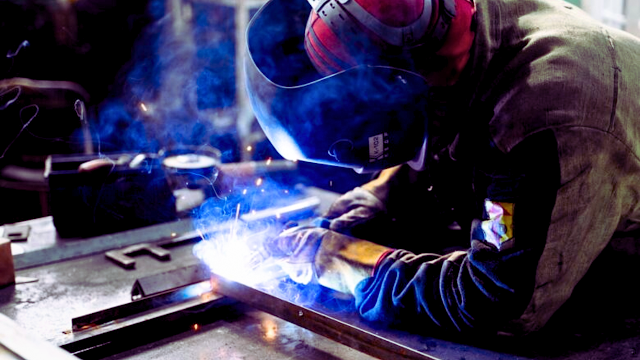6 Ways Technology Has Improved Welding in 2023
Welding has been a part of human life for thousands of years. There is clear evidence that people used this carving process in Bronze Age, Iron Age Europe, and throughout the world. There are many ancient notes and scriptures that speak of the invention of brass or iron alloys to create new products from these materials. It is a process that has helped us evolve as a civilization and we need it as much as 2000 years ago.
The process is easy to explain, but quite difficult to master. By using a tool that distributes large amounts of heat to a particular material, such as iron, you can join two, three, or more pieces together, and as they cool, fusion occurs.
However, the welding method has probably been modified at least dozens of times since ancient times. Today, with modern technology, the method has been completely changed, giving us better fusion. There is a need for more advanced technology on this subject as we are facing a shortage of experts. Many claim that in 2023 we should expect around half a million welders worldwide and this number is too low. The supply of these one-and-a-half crore welders is too short to meet the demand.
Fortunately, with the advancement of welding technology, we can make the process of turning people into subject matter experts much easier. Welding will also become much easier, easier for people to learn and understand.
Here are some ways technology has improved welding.
Safety comes first.
When working with equipment that can produce dangerous temperatures of up to 5600 degrees Fahrenheit (3100 degrees Celsius), it is important that you are equipped with the right protection. Without the right equipment, a spark can seriously injure you.
In the past, welders had little choice when it came to safety. They just had these big helmets that were made of really thick metal and there was a little cut in the metal that you could use to see through. The crack was either a hole or completely covered in black glass making it difficult to see. The helmet was also very heavy, which caused a lot of stress on the neck and back.
Fortunately, those days are long gone as protective clothing in this area has improved dramatically. Here are some examples:
Helmets are light and strong.
Your face may be one of the most important parts of your body. This is the part that you eat, smell, breathe, see, hear and most people see. You must protect her at all costs. Most helmets today are very light, but very strong and durable and can protect you from sparks, hot slugs, debris, radiation, and light that can blind you.
Some helmets may come with lenses that are dark enough to protect your eyes, but they are still dark enough. Fortunately, some come with auto-dimming glass that darkens as soon as you start soldering. Keep in mind that these headsets can come at a hefty price. If you are interested in a helmet that will give you the best possible protection, or if you need the tools to perform at your best, you should check out welding.com.au.
Insulated gloves
In the past, gloves were made of multiple layers of fabric that restricted the movement of your fingers and weren't good enough at insulating heat. Sure, they protect you from incoming sparks and hot slugs, but heat can still pass through the material.
Gloves are much thinner these days, giving you more freedom of movement, better insulation, and even more protection from hot materials. It's truly amazing how far technology has come.
Insulated jackets
More welding options
Automatic process
Insulated jackets
In the past, there was no protective jacket during welding. In case of trouble, you had the option of putting two layers of clothes on your torso and that was it. Today there are many options to protect your body from heat, improve your mobility and keep you cool when working with hot objects. You don't want this slag on your skin because it can permanently damage it.
More welding options
A century ago, welders didn't have many options when it came to welding. The only way to do this was with thermite, which was not practical at all. As time went on and we entered the 20th century, many different welding options began to appear, making welders' lives much easier. In the first half of the 20th century, dozens of different methods were available, such as immersion, flux core, gas metal, gas tungsten, shield metal, and electro-slag welding.
The most accurate method today should be with TIG machines that use tungsten inert gas. It is commonly used for melting magnesium, aluminum, copper alloys, and stainless steel.
The second most common and easiest method to learn is arc welding. It works by creating a continuous electric arc between the material and the electrode (stick). This continuous electric arc can cause metals to reach their melting point. While this may be one of the more common methods, it is not as accurate and does not provide the best-looking product.
Automatic process
Today, it is clear that artificial intelligence and robotics have experienced tremendous growth. Electric vehicles such as Tesla models have implemented artificial intelligence that can drive themselves, and many companies around the world have perfected robotics in their factories.
By combining these two technologies, it is possible to create a robot or device that will do most of the work for the welder.
Previous Post: Factors to Consider Before Buying Used Electronic Accessories in 2023
Previous Post: Factors to Consider Before Buying Used Electronic Accessories in 2023






0 Comments